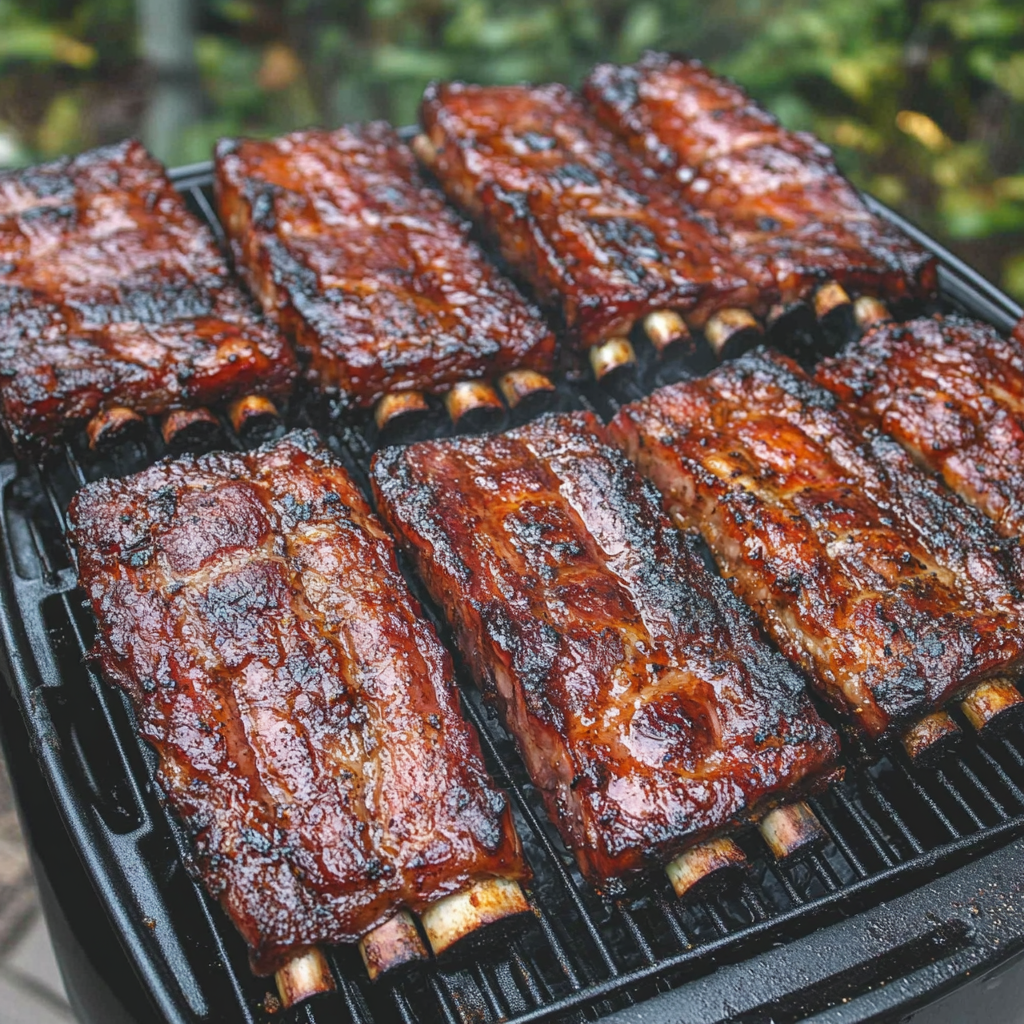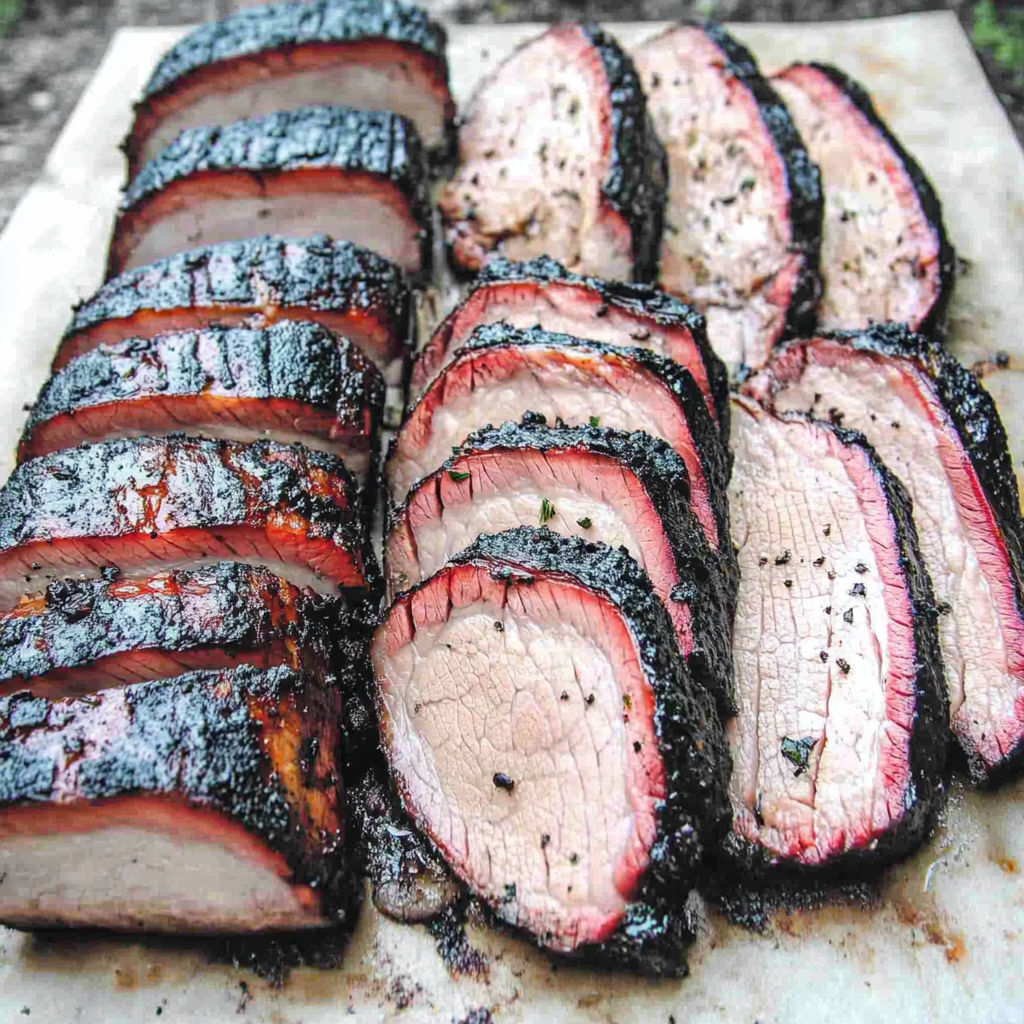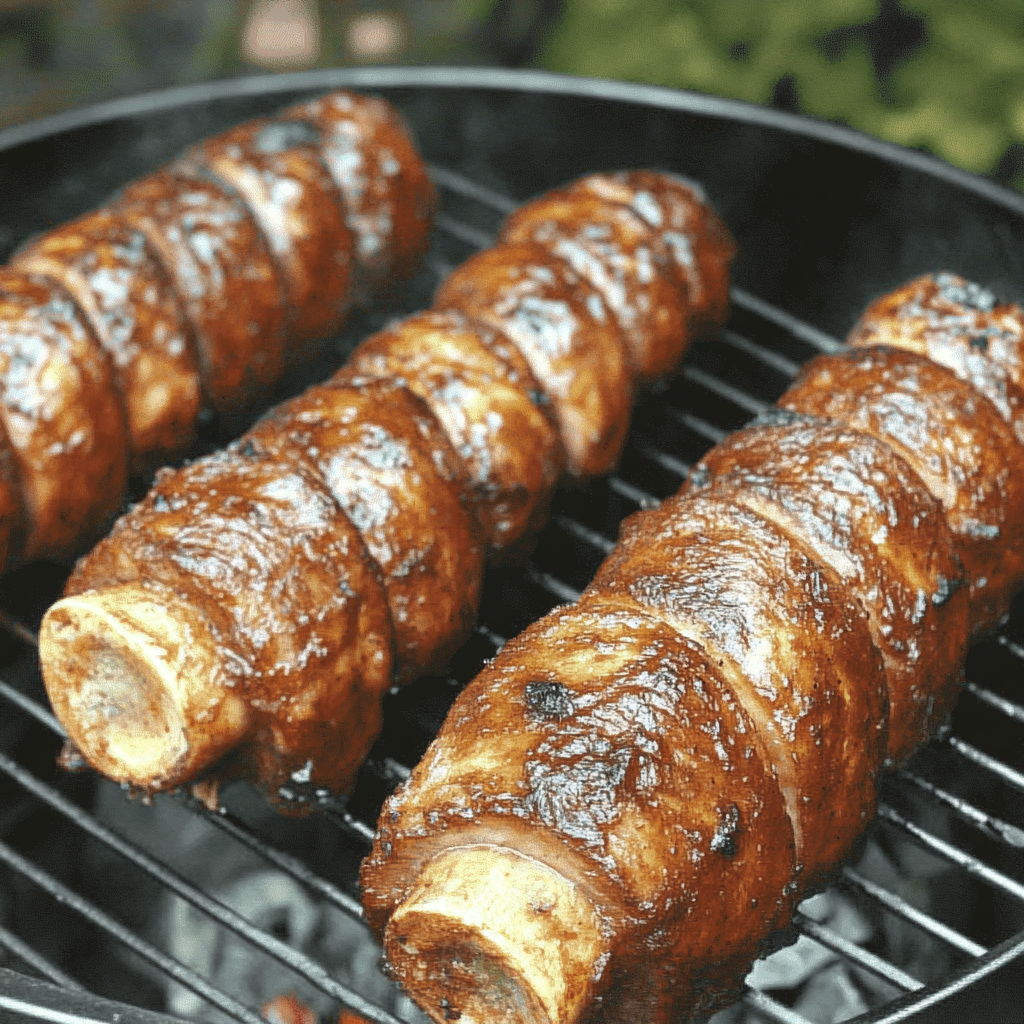🔥 Introduction to Smoker Recipes
If you’re craving bold, slow-cooked flavor with a smoky twist, smoker recipes are your next kitchen obsession. Smoking transforms simple ingredients into savory masterpieces with just wood, time, and technique.
Discover how the low-and-slow method breaks down proteins for ultra-tender texture.
Choose between offset, pellet, or electric smokers based on your comfort and budget.
Pair the right wood chips with meat to unlock intense flavors.
To get started, try this Smoked Queso recipe that shows how even cheese can shine in a smoker. It’s simple, flavorful, and crowd-friendly.
And if you’re curious about tender beef cuts, this guide on how to make fajita meat tender is a great foundation. From there, transitioning to brisket or ribs becomes effortless.
Smoked cooking isn’t just a technique—it’s a craft. With the right setup and recipes, your backyard BBQ can rival any steakhouse.
🔥 Understanding the Smoking Process
At the heart of smoker recipes lies a timeless technique: low-and-slow cooking. This method blends heat, smoke, and time to transform tough cuts into tender meals.
Heat gently breaks down collagen, creating a juicy, fall-apart texture.
Smoke layers in complex flavor compounds from your chosen wood.
Time lets everything meld, especially in fat-rich meats like brisket.
For an easy first step, explore this Cajun turkey recipe which balances spice and slow-roasted flavor—ideal for learning smoke control.
Additionally, knowing how to manage meat tenderness matters. Check out this guide on making beef fajita meat tender to understand how marination and rest time support smoking success.
Patience is key. Every hour in the smoker develops richer taste, deeper color, and mouthwatering texture. Whether it’s ribs or turkey, mastering the process ensures unforgettable results with every bite.

🔥 Choosing Your Smoker: Types and Benefits
Finding the right smoker is the first step to mastering flavorful outdoor cooking. Each type offers unique advantages depending on your skill level and goals.
Offset Smokers deliver intense smoke flavor. Ideal for brisket and ribs, they require active temperature control.
Pellet Smokers use wood pellets and offer precise temp settings—perfect for tech-savvy home cooks.
Electric Smokers are beginner-friendly and great for set-it-and-forget-it style cooking.
Kamado and Ceramic Smokers retain heat well and support long, slow smoking sessions.
If you’re just starting out, pairing your smoker with easy sides helps. Try these stuffed peppers as a flavorful, simple side dish for any smoked meat.
On weekends, many also enjoy smoking chicken. You can use ideas from this chicken and gravy recipe to build comforting, smoky meals.
Choose a smoker that suits your cooking habits. If you prefer automated control, pellet smokers are excellent. However, if you enjoy hands-on fire management, offset smokers will deliver unmatched satisfaction.
The right equipment unlocks consistency. No matter your choice, mastering your smoker leads to incredible barbecue results every time.
🔥 The Role of Wood in Smoker Recipes
When smoking food, the type of wood you use is as important as the cut of meat. Wood infuses dishes with rich, distinct flavors.
Hickory adds a bold, smoky punch—ideal for pork and ribs.
Applewood provides a sweet aroma, perfect for poultry and vegetables.
Mesquite offers a sharp, earthy taste—great for quick smokes and red meat.
Cherrywood balances sweet and savory, making it versatile for lamb and pork.
For a smoky twist on vegetables, try this Napa cabbage recipe. Add hickory smoke to transform it into a bold BBQ side.
Moreover, fruits like tomatoes also absorb smoke well. Use tips from this stuffed pepper recipe for inspiration in creating layered, smoky sides.
Wood choice shapes the outcome. Experiment with mixing woods to find flavor profiles that suit your style. Just avoid over-smoking delicate proteins.
🔥 Temperature Control & Tools for Success
Maintaining consistent smoker temperature is the secret to juicy, flavorful results. Most meats smoke best between 225–275°F.
Use a digital thermometer to monitor internal temps without lifting the lid.
Control airflow using intake and exhaust vents for steady heat and smoke levels.
If you’re smoking chicken, referencing this chicken and gravy recipe helps with timing and doneness.
For quick, balanced meals, pair your smoked proteins with sides like these stuffed peppers, which reheat beautifully in a warm smoker.
Precision tools reduce guesswork. When heat stays consistent, your results stay tender, smoky, and crowd-worthy.
🔥 Beginner-Friendly Smoker Recipes
If you’re just starting out with smoker recipes, it’s best to begin with forgiving cuts and simple techniques. These easy recipes deliver smoky, crowd-pleasing results without complicated steps.
1. Smoked Chicken Wings
Marinate in buttermilk, then season with paprika, garlic, and salt.
Smoke at 225°F for 90 minutes.
Glaze with honey-mustard for a crispy finish.
Want more flavor inspiration? This chicken and gravy recipe teaches seasoning blends that also work great on wings.
2. Hot-Smoked Salmon
Rub salmon with olive oil and lemon zest.
Smoke at 180°F for 2–3 hours.
Use alder wood for a sweet, clean taste.
Pair this dish with seasonal greens like those featured in this Napa cabbage recipe roundup for a healthy plate.
3. Smoked Vegetables
Coat sliced bell peppers, onions, and zucchini in olive oil and herbs.
Smoke at 250°F for 45 minutes.
Serve as a hearty side or inside tacos.
4. Smoked Meatloaf
Mix ground beef with soy glaze and breadcrumbs.
Smoke at 275°F for 2 hours.
Finish with a ketchup-based glaze.
These beginner-friendly smoker recipes teach you essential techniques like brining, dry rubs, and controlling smoke flow. With each cook, your confidence and flavor skills will grow—without the stress of overcomplicated steps.

🔥 Essential Smoker Recipes to Master
Once you’ve mastered the basics, it’s time to tackle the essential smoker recipes that define true BBQ greatness. These classic dishes combine bold flavor, tender texture, and simple ingredients.
1. Smoked Brisket
Trim the fat cap to ¼ inch.
Season with salt, pepper, and smoked paprika.
Smoke at 225°F until it reaches 203°F internally.
You can pair brisket with bold sides like these stuffed peppers for a complete, smoky meal.
2. Pulled Pork
Use a pork shoulder or Boston butt.
Rub with mustard, brown sugar, and garlic.
Smoke at 225°F until 205°F, then shred.
Add a tangy sauce or serve with greens from this Napa cabbage recipe guide.
3. Signature Ribs
Use baby back or spare ribs.
Apply a dry rub of brown sugar, cayenne, and garlic powder.
Follow a 3-2-1 method: smoke, wrap, then glaze.
4. Whole Smoked Chicken
Brine in buttermilk and herbs.
Smoke at 250°F until internal temp hits 165°F.
Crisp the skin with a final high-heat blast.
These recipes lay the foundation for consistent, flavorful smoking. Once mastered, you’ll unlock endless variations using the same core techniques.
🔥 Best Meats for Smoking and How to Prep Them
Choosing the right meat for your smoker ensures juicy, flavorful results. Fat content, cut size, and prep methods all matter.
🥩 Beef Cuts
Brisket: Trim the fat cap to ¼ inch and apply a coarse rub.
Chuck Roast: Marinate overnight in buttermilk or beer before smoking.
Short Ribs: Season simply with salt, pepper, and smoked paprika.
Looking for more beef inspiration? This beef fajita tenderness guide offers great prep tips that also apply to smoked roasts.
🐖 Pork Favorites
Pork Shoulder: Coat with mustard and a bold dry rub.
Pork Belly: Cure overnight in a salt-sugar mix, then smoke low and slow.
Country Ribs: Glaze with a vinegar-based mop for juicy, tender meat.
Pair smoked pork with comforting dishes like these stuffed peppers to create a full plate.
🐓 Poultry Choices
Chicken: Brine in buttermilk and herbs for moisture and flavor.
Turkey: Inject with seasoned butter and smoke at 250°F for crispy skin.
Each cut responds differently to smoke. With proper prep, you’ll get perfect bark, tenderness, and unforgettable flavor every time.
🔥 Going Beyond Meat: Smoked Vegetables and Seafood
Smoker recipes aren’t just for meat lovers—vegetables and seafood absorb smoky flavor beautifully, adding depth to every dish.
🥦 Vegetables That Love Smoke
Bell Peppers, Zucchini, and Onions: Toss with olive oil and rosemary.
Corn on the Cob: Smoke at 225°F for 1 hour with hickory or applewood.
Mushrooms: Slice thick and smoke for a “steak-like” texture.
Use this stuffed pepper recipe as a starting point—just adapt it to include smoked veggies.
🐟 Seafood Favorites
Salmon: Cold-smoke with alder wood or hot-smoke at 180°F until flaky.
Shrimp: Quick-smoke at 250°F for 20 minutes—great for tacos or pasta.
If you’re seeking lighter sides, this Napa cabbage recipe roundup offers options that pair perfectly with smoked seafood.
Vegetables and fish take on smoke quickly, so use lighter woods and monitor time. Simple prep, big payoff!

🔥 Advanced Smoker Recipes for Special Occasions
When it’s time to impress, turn to advanced smoker recipes that deliver rich flavor and unforgettable presentation. These dishes shine at holidays or backyard celebrations.
🦃 Holiday Smoked Turkey
Inject with seasoned butter and herbs.
Smoke at 225°F, then wrap to retain moisture.
Finish with high heat to crisp the skin.
For holiday-worthy sides, try pairing it with this chicken and gravy recipe adapted for smoked poultry flavor.
🥩 Competition-Style Ribs
Rub ribs with brown sugar and cayenne.
Follow the 3-2-1 method with apple cider spritzes.
Finish with a glossy glaze or tangy mop.
Complement bold ribs with lighter greens from this Napa cabbage recipe collection.
🍑 Smoked Desserts
Smoke a peach cobbler or caramel tart for 15–30 minutes.
Use applewood or cherrywood for sweetness.
Balance smoke with fruit or chocolate richness.
These recipes highlight the versatility of your smoker. From main dishes to desserts, smoked food becomes the centerpiece of every gathering when technique meets creativity.
🔥 Tips to Level Up Your Smoking Game
Once you’ve mastered the basics, small tweaks can elevate your smoker recipes to pro level.
Layer flavors by combining dry rubs, injections, and wood types.
Use a water pan to retain moisture and reduce heat spikes.
Let meats rest before slicing to lock in juices.
If you’re working with tougher cuts, explore this beef fajita tenderizing guide to improve texture before smoking.
To round out meals, lighter sides like those in this Napa cabbage recipe list keep your plate balanced and flavorful.
Experiment often—each smoke teaches something new.
❓ Frequently Asked Questions (FAQs)
🔥 What are some easy smoker recipes for beginners?
Start with smoked chicken wings, meatloaf, or vegetables. These require minimal prep and give great results. You can also try a flavorful twist like this smoked queso dip—perfect for parties.
🌲 How do I choose the right wood for smoking?
Use hickory for bold meats like pork. Applewood adds a mild, sweet flavor to poultry and fish. For a stronger profile, try mesquite—but use it sparingly.
🌡️ What temperature should I smoke meat at?
Most meats cook best between 225°F and 275°F. Keep temps steady using a digital thermometer and well-regulated vents.
🥬 Can I smoke vegetables?
Yes! Bell peppers, mushrooms, corn, and zucchini absorb smoke beautifully. Pair with ideas from this stuffed pepper recipe for amazing results.
🍖 What are the best meats to smoke?
Brisket, pork shoulder, ribs, and chicken are top picks. Leaner meats need extra prep to avoid drying out.
📦 What’s the 3-2-1 method for ribs?
Smoke for 3 hours unwrapped, 2 hours wrapped in foil, then 1 hour with glaze to finish. It delivers tender, flavorful ribs.

